The Government has just released a revised National Policy Statement on Urban Design – which will affect the look of our major cities and the way they work. It comes into effect on 20 August 2020, just in time for the incoming Government. This is a big one – the NPS-UD was last updated in 2016 under the Nats, and so this is the first time that Ministers Phil Twyford (remember him? He used to be important) and David Parker (the quiet David, not the mountain-bike riding sacked one) have managed to put their stamp on this important piece of Government business.

Greater Auckland have put out a very helpful piece on the effect of this legislation on Auckland, with which I’m not going to try to compete with, but similar effects are going to be felt here in the capital. One of the key parts of this NPS-UD will be the effect on car parking, which of course excites the petrolheads in Auckland more than it does the people in Wellington.
“The requirement in district plans for developers to provide car parking in developments will need to be removed. Developers can now choose to include car parking that meets the needs of their specific development, this will allow space to be more appropriately allocated to other uses and drive down the cost of housing, particularly in higher density areas. It will also support the Government’s carbon emissions reduction goals.”
That’s going to have a big effect nonetheless – being as Auckland has always insisted on Minimum Car Parking provision, and Wellington has had a Maximum instead, but the complete removal of car parking requirements will allow many more developments to get underway. Apartment buildings will now go ahead with zero parking – that’s the way it should be – inner-city residents should be walking or bussing about. Aucklanders will still get excited by this though – recently there was a huge fuss and accusations of the end of the world when a development up there was allowed to proceed with no car parks. Fairly standard practice down here though these days.
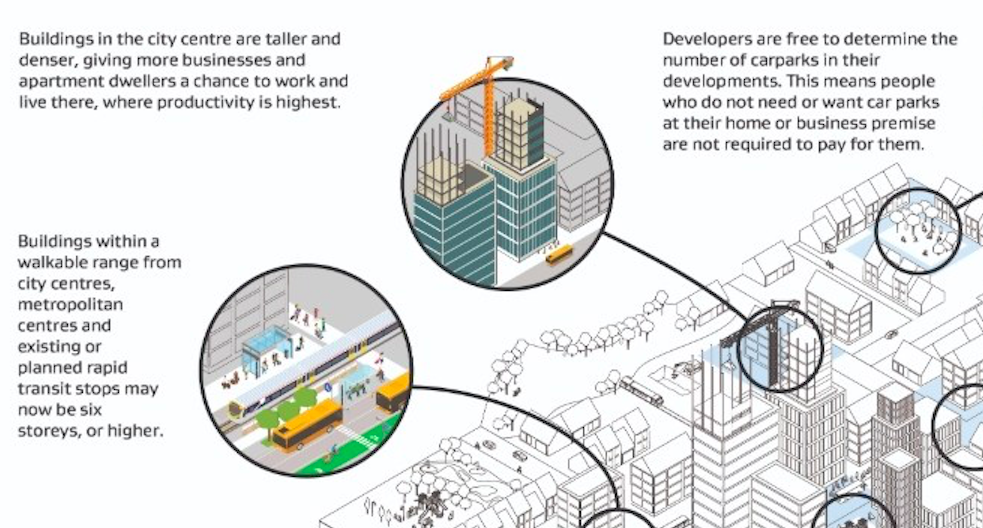
There’s more to this NPS-UD than just car parking though. There’s also building height. The NPS-UD clearly wants more:
Policy 3: In relation to tier 1 urban environments, regional policy statements and district plans enable:
(a) in city centre zones, building heights and density of urban form to realise as much development capacity as possible, to maximise benefits of intensification; and
(b) in metropolitan centre zones, building heights and density of urban form to reflect demand for housing and business use in those locations, and in all cases building heights of at least 6 storeys; and
(c) building heights of least 6 storeys within at least a walkable catchment of the following:
(i) existing and planned rapid transit stops
(ii) the edge of city centre zones
(iii) the edge of metropolitan centre zones; and
(d) in all other locations in the tier 1 urban environment, building heights and density of urban form commensurate with the greater of:
(i) the level of accessibility by existing or planned active or public transport to a range of commercial activities and community services; or
(ii) relative demand for housing and business use in that location.
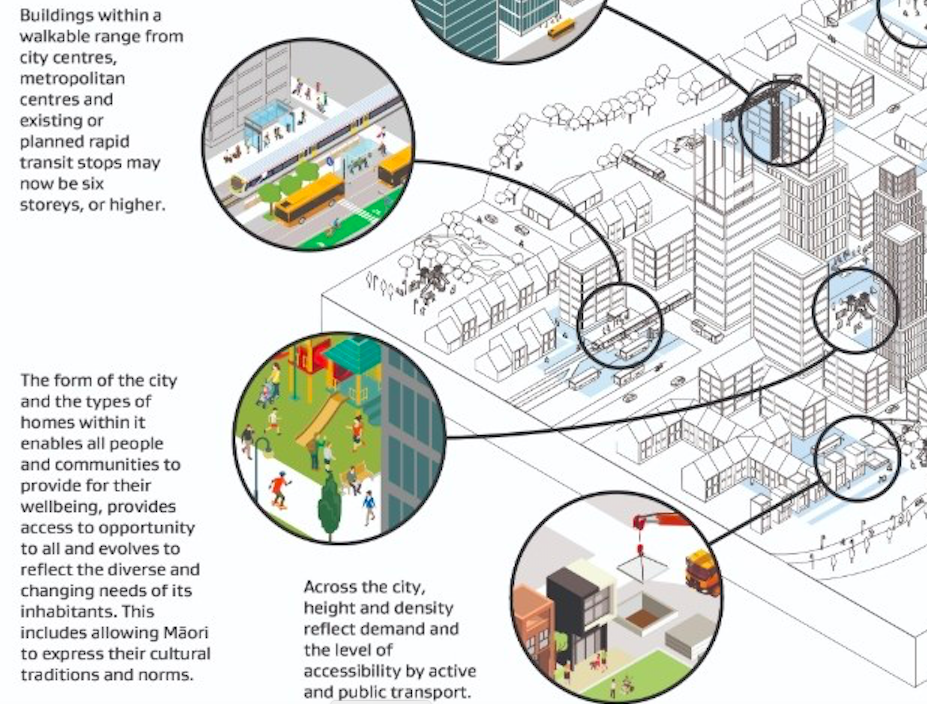
Putting it bluntly, I’m in two minds about this as one the one hand I know I’m strongly supportive of increasing building heights and on the other hand my apartment may end up in shadow caused by developers building up to block out my sunshine. No No I say: You are my sunshine! You keep me happy, when skies are grey! Please don’t keep my sunshine away…
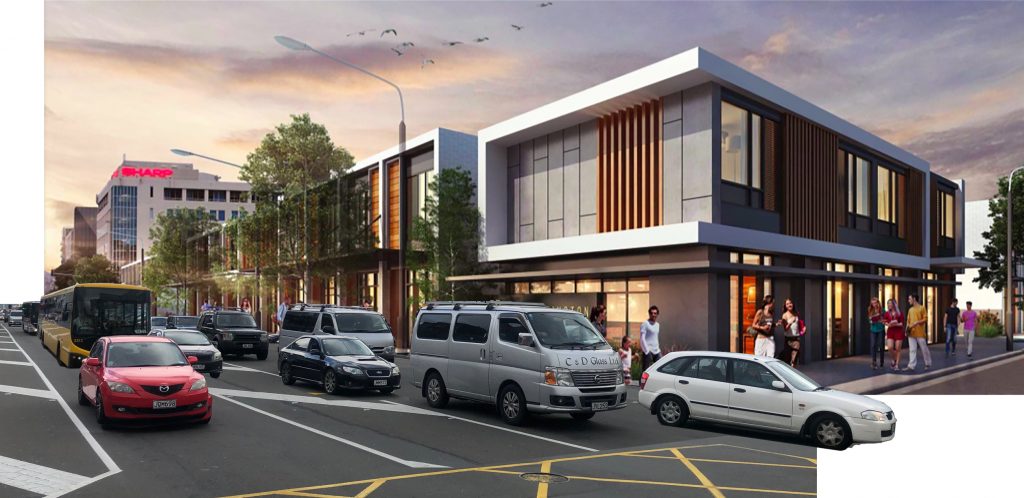
But seriously, this UD guideline is on the right track. No doubt enraged and influenced by such stupid developments as Paddington on Taranaki, where in the heart of our “major boulevard” development area, some Chinese & Australian developers have sauntered into central Te Aro and are building two-storey high townhouses in the most inappropriate place: along Taranaki Street. Seeing as they are just starting this week, and will be in place for the next 50 years at least, this bullshit development “Paddington” has fucked up Wellington aspirations under the existing rules – but would not be permitted to exist under the new rules. This particular site was always 6-9 storeys high in the Council’s mind, but the developers would not play ball and preferred to bowl underarm, side-stepping the enormous insurance issues that dog central city apartment owners in Wellington – issues that still need to be addressed and resolved.
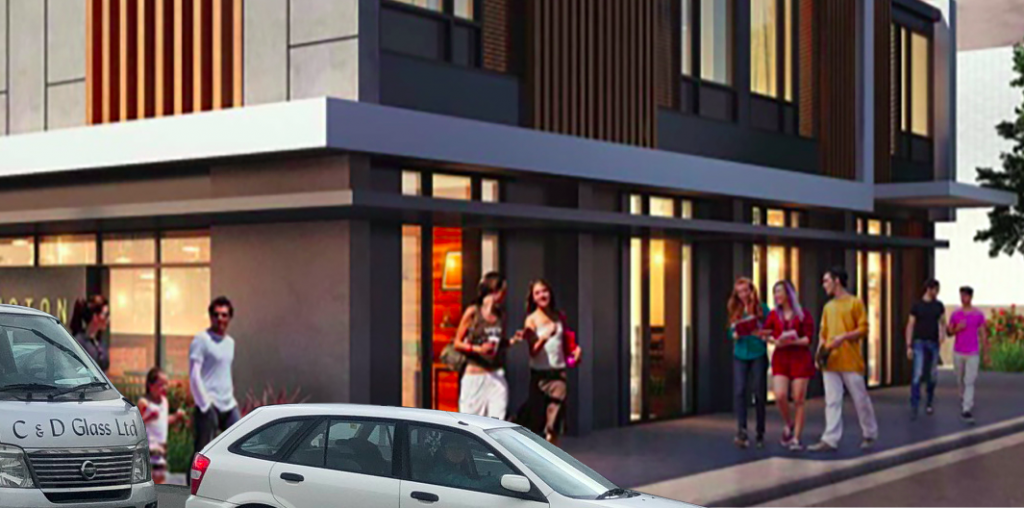
Two storey high supposed “Live-Work” townhouses next to our most busy urban traffic boulevard makes a farce of the last 20 years of WCC policy. Of course, they all sold out quickly, mostly to off-shore investors I suspect, who will probably never have to live there. The many laughing, happy, shiny people in the “Paddington” illustration seem blissfully unaware that this is the windy side of a very windy street, that there is no verandah worth speaking off to keep the gusts away, and I had to add in the cars and buses myself to get over the developer bullshit vision of a traffic-free idyll.
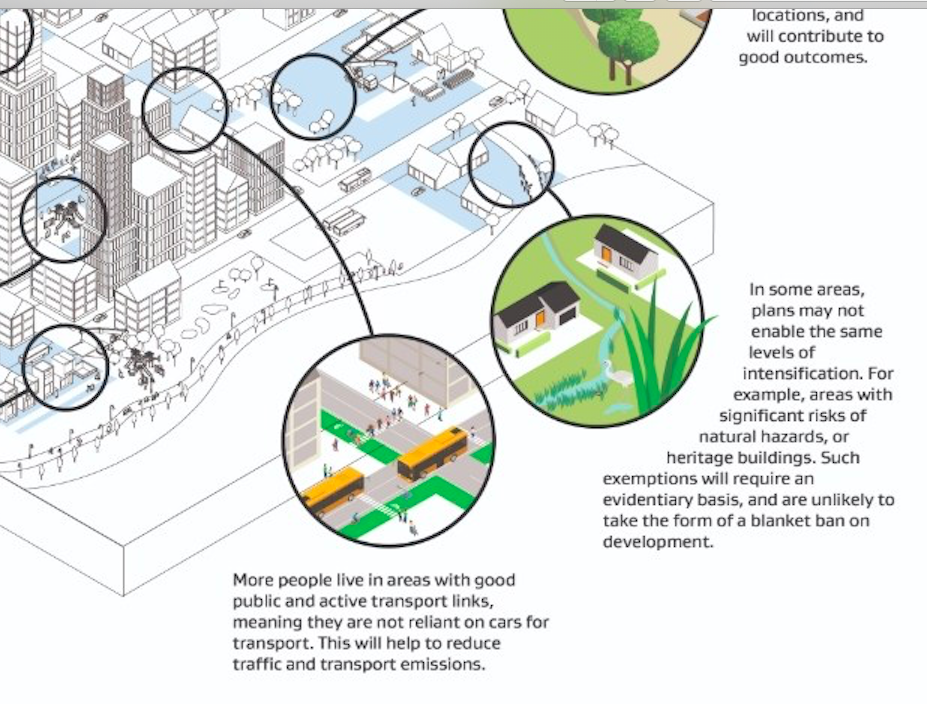
It’s not all going to happen overnight, of course, and it will take years to bed in, but it is a start. Unlikely to be overturned by the Nats should they win in the next election – but then again, the Nats are unlikely to win in the next election – this Policy is going to affect not just the people of Auckland, Wellington, Christchurch, Tauranga and Hamilton (yes, that’s right – Tauranga and Hamilton are now considered “Tier One” cities, despite being nothing more than endless suburbs), but will also affect “Tier Two” cities as well. That means you: Whangārei, Rotorua, New Plymouth, Napier, Hastings, Palmerston North, “Nelson Tasman”, Queenstown and Dunedin.
That list must just about cover everyone! Whangārei is a Tier Two city now? Last time I visited there it was just a milk-bar on the main highway out of town! Clearly tie for a roadie – except whoops!!! I don’t have a car!





Comments should be working again now, apologies for the interruption!
Thanks Philip – nice to have your input. I knew something must be happening / not happening when there were no Spam received for a whole day! Averaging a couple of hundred spam a day now – they sure love the Eye of the Fish. All caught by our excellent spam guards.
Re the intensification of the city: the backlash has begun almost instantaneously.
https://www.stuff.co.nz/national/122251147/plan-to-squeeze-80000-people-in-wellington-expected-to-focus-on-innercity-sparking-heritage-fears
“But how the capital will house an increasing population and where has raised questions and concerns over the city’s future and preservation of its past. Three heritage organisations have claimed the incoming spatial plan would allow pre-1930s buildings in inner-city residential character areas to be demolished without consent to make way for high density housing.”
The Mount Victoria Heritage team strike again….
I had a comment full of erudite and witty brilliance all ready to go yesterday.
Can’t remember what it was now.
I do have to commend that swell gif animation. Is there an app for making that happen in he real urban fabric?
There are so many other topics on which I should be posting right now, but you know? That animation too so long to set up, and the building proposal – which they have actually started building – is so bad (two storey high townhouses on Taranaki Street right in the centre of town for the next 200 years – that’s just bollocks!) – that I think I’m just going to leave it there till I get a whimpering apology from someone in the WCC that they screwed up badly over this.
I’m waiting… Planning Department? Urban Design Group? Resource Consent Team? Councillors? Mayor ??
Even if they couldn’t stop it because it wasn’t high enough, surely they should have been able to do something based on the subdivision requirements
(these are marketed as freehold title- (with no body corp)
I know if I wanted to take a block of a couple of acres in the suburbs and divide it into a couple of hundred 200sqm lots, all hell would break loose..
I walk past or bus past this nearly every day, and it still makes me furious – it is so stupid. Shouldn’t have been allowed to happen. I’m still waiting till I get a whimpering apology from someone in the WCC that they screwed up badly over this. Come on WCC, time to fess up – admit it, you screwed up. Planning Department? Urban Design Group? Resource Consent Team? Councillors? Mayor ??
Greenwelly – re your comment “these are marketed as freehold title- (with no body corp)” – that is EXACTLY the driver behind this project, make no mistake. The Unit Title rule requires a Body Corp, and the Body Corp rules require collective insurance, and the insurance fees are so rapacious that it is driving apartment owners bankrupt. Hence: failure of confidence in Apartments, and building of Stupid Suburbia in Central Te Aro.
Hi Levi – I completely agree regarding Taranaki Street. It is essentially wasted capacity. Officers were also unhappy. However obviously it made financial sense to the developer but is not what we want to see in our Central City. Indeed we cannot afford that on a widespread basis. I think insurance is the key driver here and it is clear that the insurance market is not working as it should – especially to reflect risk reduction for resilient buildings.
I think you can expect a push in the District Plan to set minimum heights, below which a consent is required – and indeed this is what the new NPS Urban Development requires.
If we can get a lot of intensity in the right places it reduces the need to go into some of the more sensitive areas – and I think this should be a key focus for Planning for Growth.
Kind regards
Andy
Thanks Andy – I appreciate the answer. Very sad result on Taranaki St – going to sit there for the next 50 years to remind us how planning has failed us. Or how developers have screwed the system. And yes, I totally agree that until the insurance issue is resolved, we are probably going to see this again: our Body Corp insurance is horrendous. I think we need a law change regarding insurance – I’d rather that money is going to a fund for strengthening, upgrading, or future maintenance, than just into insurer’s pockets.
OK – I’ll see if I can get this blog back onto track now we’ve had a very appropriate reply: I believe we’ve got Plannning for Growth to discuss!